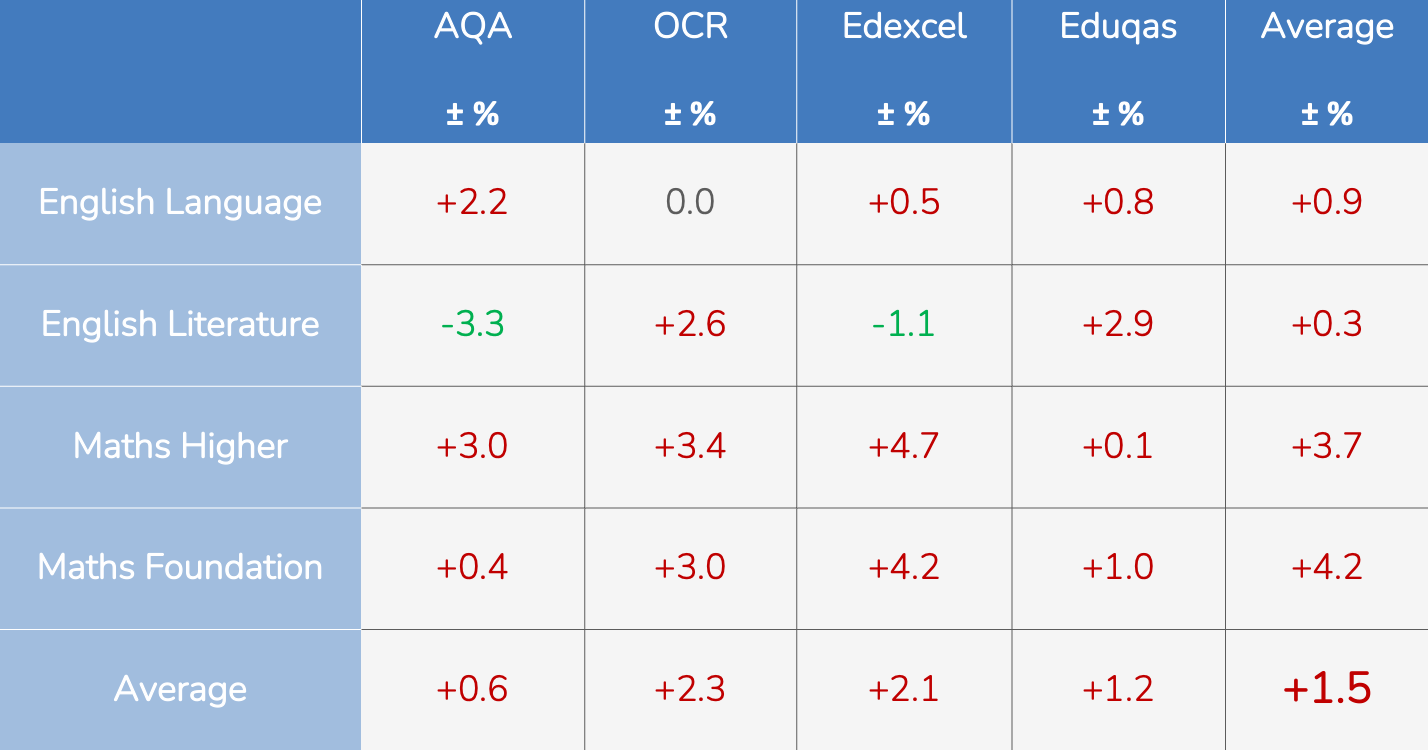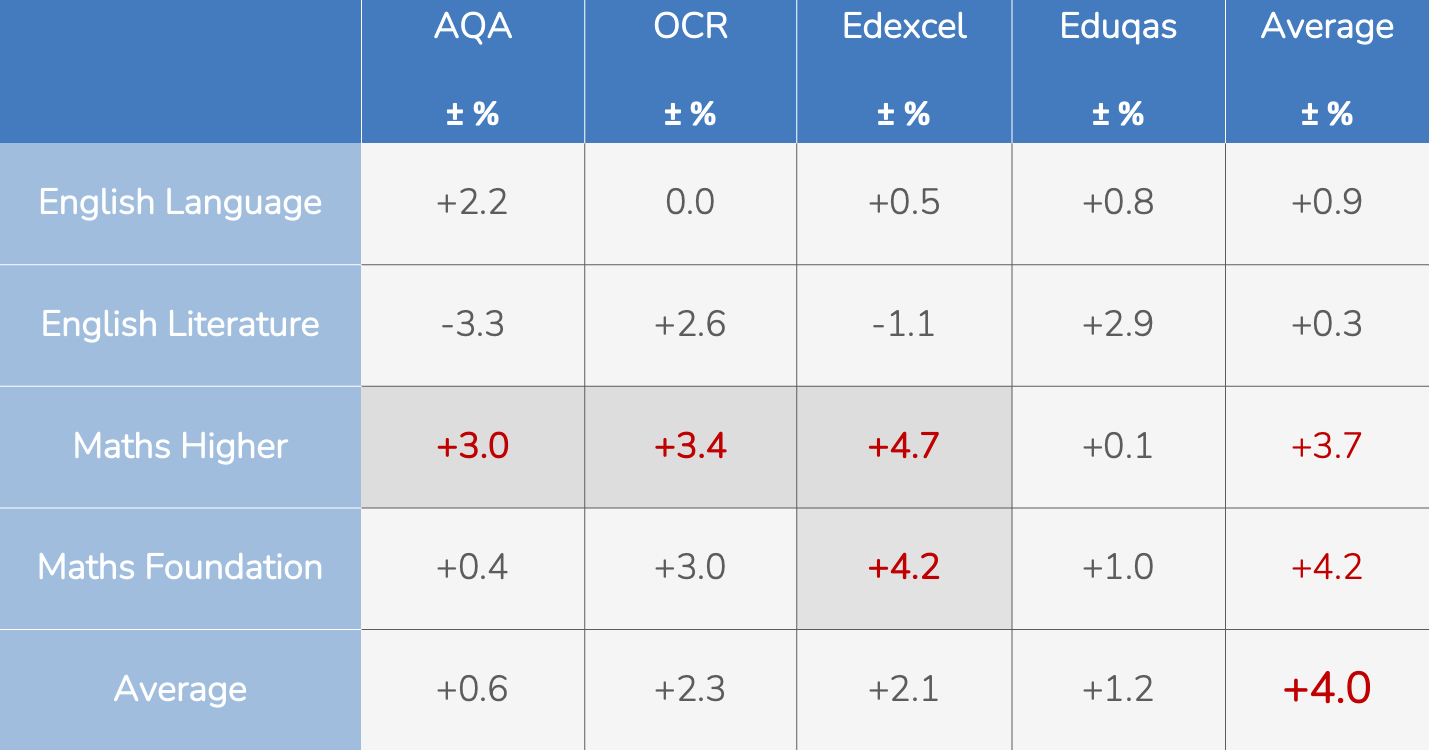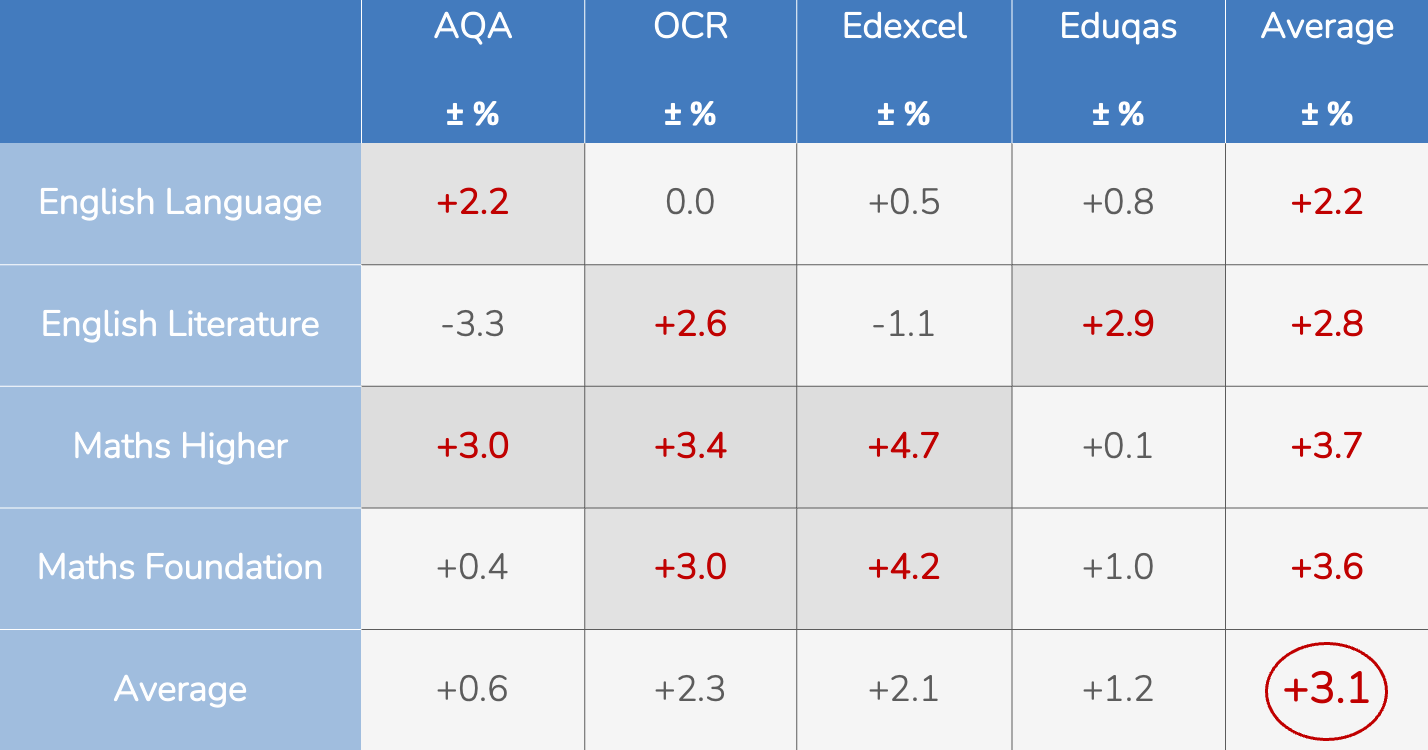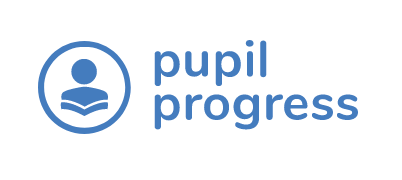What percentage should I alter my Grade Boundaries by?

We’ve been getting a lot of questions regarding the grade boundaries that subject areas and schools should be using: 2018 + 5%? 2018 + 10%? Boundaries from different subject areas? We wanted to write this blog about what we’ve been recommending and why, not only to share our suggestions but also to explain the methodology behind our theory.
There is a logical process that has informed our recommendations, and we’ve come to what we feel is a sensible, informed decision on the boundaries that should and shouldn’t be used. Part of our recommendation is made up of statistical evidence and analysis, and the other part from considering the psychology of target setting and attainment on both teachers and pupils.
The hard evidence
About two months ago we collated data on the new boundaries for both English and Maths. This because they are the only two subjects at GCSE level that have had two sets of GCSE boundaries for the new 9-1 grading system. We were interested in seeing the difference between the years, and qualifications across all exam boards.
A positive (+) sign shows that the grade boundaries increased between June 2017 and June 2018
A negative (-) sign shows that the grade boundaries decreased between June 2017 and June 2018

This shows us that on average, across all qualifications for English and Maths, across all exam boards, the grade boundaries increased by 1.5%, so got harder by 1.5%.
What does this tell us? This tells us that pupils were able to achieve more raw marks. The more raw marks in the exams, the more raw marks in the controlled assessments, the higher the boundaries will be as there can only be a certain percentage of pupils that achieve at each grade.
Ofqual has strongly implied that the first year of new courses will have slightly lower boundaries, with the second year boundaries increasing. This is in line with the way they set boundaries using comparable outcomes. When you think about it, it’s pretty logical that this would happen. Teachers had a brand new specification, assessment model, and grading system impressed on them in 2016, with a very short time to prepare for the changes. Therefore, raw mark scores weren’t that high. Then, as teachers always do, they learned from the process. They rewrote resources to better suit their pupils, learned how to improve performance in the exams by crowd-sourcing and developing better methodologies and practices from teaching communities, etc. So, when it came to the 2018 series pupils were better prepared to sit the exams, just as teachers were better at delivering the specification. So, with more raw marks achieved, more pupils doing better, the higher the grade boundaries as a result.
So, by what percentage should I increase the boundaries?
When you look at the comparison table you can see that with some exam boards the boundaries stay the same, or decrease as was the case for both English and Maths. This was a huge variation of 3.1%. You can also see that the majority increase, again all with quite a large variation (some as low as 0.1% and others as high as 4.7%). So, how does this help us to make an informed decision?
This is when data meets sensible thinking.
If you consider the reason for wanting to adjust the boundaries in the first place, essentially it’s to try and predict or counteract the increase in grade boundaries that we are likely to experience in 2019.. With that in mind, and with our teacher hats on, we want to think about what the worst case scenario would be. If we look at what we think most grade boundaries will increase by, and increase the boundaries by this much, as a worst case scenario the pupils would achieve that grade predicted. In which case, we’re prepared. If the boundaries come in lower than expected, then happy days! Christmas has come early… or again!
Considering the upper limit
When looking at the table, Maths higher EDEXCEL comes in at a whopping +4.7% increase! However, looking at the rest of the data that is a standalone result, with only one other increase in the ~4% area.
We suggest that this would be a worst case upper limit to what we will see in 2019. We have calculated our upper limit taking an average of the four highest increases in boundaries: 4.7, 4.2, 3.4 and 3.0, which comes out at 3.95%. So roughly 4%.

If you look at all the numbers which increased by more than 1% the average is 3.1% (see table below). This leaves us with quite a sensible suggestion that the boundaries should increase by 3-4%. Therefore, we recommend you adjust by +4% to be on the safe side. Again this is considering the rationale behind the process in the first place: to try and work to the worst case scenario.

Why not higher?
We’ve heard some schools have been setting their boundaries to +6% and in some cases 8% or 9%. The reason for our recommendation not to go this high is quite simple: it’s going to have a hugely detrimental impact on the motivation levels of both pupils and teachers. The thinking is of course:, “Let’s be on the safe safe safe side… if there is a chance it can go up by 4.7%, then what is an extra couple of percent going to do?”.
Well, we’ll tell you. Increasing the grade boundaries by 8% is essentially suggesting that a pupil predicted to get a grade 4 will need to achieve the number of raw marks needed to achieve a 5 or 6. The percentage gap between each grade do vary for different courses, but are commonly between 7-10%. If you increase the grade boundaries by more than 8% you are at risk of predicting all your students a grade lower than they will actually achieve. This will have a strong negative impact on both staff and student morale and could make identifying borderline students harder.
In conclusion
It’s important to remember that the purpose of setting targets and goals is to increase motivation. There’s no rocket science behind it, there isn’t even a quote from a well-published author or specialist in the field that I need to reference. All you need to ask when looking at any goal is whether it’s SMART. So, is the target (Target Grade) Simple, Measurable, Achievable, Realistic, and Time-Bound (i.e. can it be achieved within the time allocated to it)? If the answer is yes, then you’ll be able to support and motivate your students to achieve it.
See how easy it is to adjust Grade Boundaries in Pupil Progress
Simple and fast Grade Boundary adjustment is one of the core tools of our exam-board specific trackers. All previous years’ series of grade boundaries are pre-loaded on the system, meaning you can choose which exam series grade boundaries you want to use. You can also increase or decrease the boundaries by a percentage up to 10% to change the level of challenge for your students. All grades on the tracker are instantly updated to reflect the changes in the grade boundaries applied.
If you’d like to give this and our many other features a try, don’t miss our four-weeks no-obligations free trial Pupil Progress.

Barnaby Grimble
Co-founder
Chief Product Officer

Comments